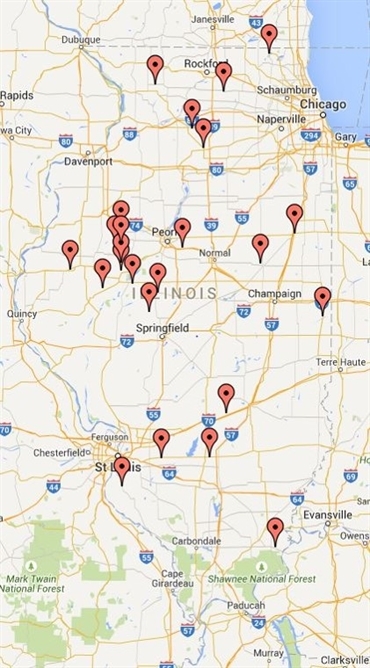
Netzanette
Can Illinois save money by consolidating cemetery districts?
 By Sean Wiley, M.P.P. candidate, University of Chicago Harris School
By Sean Wiley, M.P.P. candidate, University of Chicago Harris School - August 24, 2015
For our Behind the Numbers series, we asked students at the University of Chicago Harris School of Public Policy to investigate selected types of special purpose districts in Illinois, analyzing the services provided, financial conditions and efficiency of service provision. Their work offers policy makers guidance on where to direct local government reform efforts going forward.
In order to create a more efficient government, Governor Rauner signed Executive Order 15 in February, initiating the consolidation of some of Illinois’ 6,963 units of government—the most of any state. Currently, 24 of those different governments are special purpose cemetery districts that generated less than 1 million dollars in revenue for 2014. Though its impact on the overall Illinois fiscal climate is minimal, consolidating some cemetery districts would be cost-effective and relatively easy.

Sean Wiley
The majority of cemetery districts are in Central and South Illinois.
In 1957, Illinois passed the Cemetery Maintenance Act, allowing jurisdictions to form cemetery districts after passing a referendum. Districts often form when the market fails to give people a fair price, or residents want to ensure the cemetery will continue to be maintained as they wish long into the future. Burying a loved one is an emotional time, and cemeteries are able to charge people more than the land and its maintenance is worth. The vast majority of cemeteries are privately run; therefore, running a cemetery as a public good rather than a private one could protect people from possible price gouges.
However, without smart public decisions, public cemeteries may also have consumer and producer economic inefficiencies. Most of the 24 cemetery districts are in rural towns in central and southern Illinois and vary wildly in their expenditures per person, from $2.10 in Waterloo, to $118.93 in Sugar Creek. In order to save money for their constituents, districts could consolidate into other cemetery districts or governing bodies to become a more efficient public good.
The main cost savings from consolidation comes from the sharing of capital assets and labor costs. Maintaining the grounds is the main task of a cemetery district, and it requires expensive machinery. Districts will pay less money when they share those assets. For example, in Fulton County on the west side of the state, there are five cemetery districts that require the same heavy machinery to run effectively. By consolidating into one cemetery district, the cost per person will decrease tremendously, because the main costs are divided by more people. The districts will also save by reducing board members they have to pay and potentially utilizing their labor more efficiently by sharing ideas.
Other government entities that could absorb the responsibilities of cemetery districts are counties and park districts. Both have some capital assets that cemeteries can share and efficiently utilize their labor to maintain their district.
Though consolidating cemetery districts would be cost-effective, not every town has similar preferences. Even the quality of lawn care services may differ from district to district. Consolidating with a county or park district may save money, but it also means allowing a special government with a variety of responsibilities and needs to take care of the cemetery. Each district must evaluate whether or not the savings outweigh the potential decrease in quality of service.
Learn more about this issue with other posts in the Behind the Numbers series.
Sean Wiley is a rising 2nd year M.P.P. candidate at the Harris School of Public Policy focusing on municipal finance and education. Before attending the University of Chicago, he taught high school social studies for four years, and he currently works as an analyst in the finance department for the Urban Education Institute.